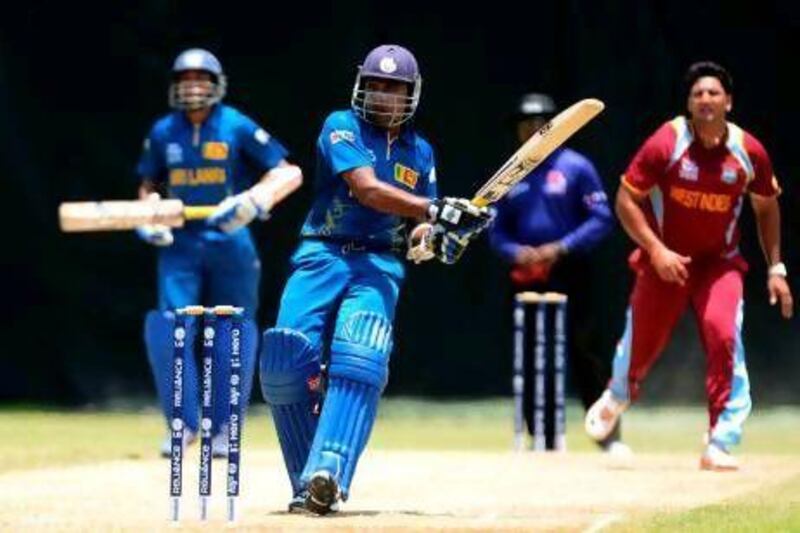Dynamics of the group
Matters appear straightforward: the hosts and South Africa should go through.
Sri Lanka look good for greater glory given home conditions and a balanced squad; power and skill in batting, variety in bowling and quality all-rounders.
South Africa will hope to break from the script at global tournaments, where as heavyweights they slip through the groups without bother before getting knocked out. They look good again but that means nothing.
Zimbabwe's Twenty20 story began promisingly in 2007, with a five-wicket win over Australia but since then there has been nothing. For them to progress would be a shock and for a side that has lost their last 12 T20s, that's not likely.
Players to watch
Mahela Jayawardene (Sri Lanka)
A surprising nomination at first glance? Mahela Jayawardene after all is in the traditional mould of subcontinent Test batsmen. But as captaincy has revealed, he is an astute and inventive thinker.
Jayawardene's genius has been to keep his basic game; instead he has only heightened its sense of elegant attack. His cover drives are still beautiful, as are the late dabbed cuts. He has added greater variety to the sweep, including a deft paddle and several reverse options.
His threat was clearest at the 2010 World T20 where he was the highest run scorer.
AB de Villiers (South Africa)
AB de Villiers is the most gifted South African of his generation, an all-round sportsman proficient at rugby, tennis and golf. But he was born to bat, a technically sound foundation dabbed with the modern day spirit of attack and improvise.
He is particularly accomplished against spin, but there are few shots he has not mastered. His numbers do not look impressive but his presence as the most innovative in what can be a one-paced batting order is essential.
Invariably when South Africa need to step on it, de Villiers, now captain, is the man.
Brendan Taylor (Zimbabwe)
At 26, Brendan Taylor has burdened veteran's shoulders; he is the captain, wicketkeeper and the best batsman. Even if Zimbabwe do not progress he will be worth watching.
He first came to global notice in this very format, an impish, unbeaten 60 helping Zimbabwe beat Australia in Cape Town in 2007 off the game's last ball. But he was most impressive at the 2011 World Cup - also in Sri Lanka - where the ramped uppercut for six became one of the sights of the tournament.
Photographers will not mind his cover drive either.
Match to watch
Sri Lanka v South Africa, September 22, Hambantota
Both sides will probably have qualified by this stage and because seedings have been pre-decided, it will not really matter who finishes top.
But without much at stake, it will be the first chance to properly assess two sides heavily fancied for the tournament title. South Africa have traditionally been the best equipped out of all the non-subcontinent sides to handle spin and the conditions found in this region but against an attack of Sri Lanka's maddening variety, even they will be fully tested.
In any case, given the talent on show it should be a cracker.
Venue
The Mahinda Rajapaksa International Cricket Stadium - to give it the full name - in Hambantota is an amazing sight and story. It has a lifeless, futuristic sleekness, named after the country's president who is from the district, but is right in the middle of a deeply rural and sparse district in the country's south.
Construction began in May 2009 and by February 2011, it was hosting the opening game of that year's 50-over World Cup. The cost? It nearly bankrupted the cricket board. It holds 35,000 (as it did in that first game) but so unpopulated can the district feel, you wonder where they all came from.
Talking points
Sri Lanka
Sri Lanka are regular visitors to the later stages of world tournaments; including 2007, they have been in the final of three (and semi-finalists at the last World T20). They have nothing to show for it, however, and if they do so again the word "choke" might begin to be bandied about.
"Getting ourselves into the semi-finals and final means that we are doing most of the things right, but perhaps we need to push a little bit more in a big game, like a final, to win it," said Jayawardene. They are, as ever, well-placed to do it.
South Africa
Jacques Kallis is walking proof of what the Twenty20 format can add to an already legendary batsman's game - and that age (he will be 37 a week after the tournament ends) need not be a hindrance.
Kallis has not been a regular feature of South Africa's Twenty20 side since the middle of 2010, but a stellar season for the Kolkata Knight Riders this year in the IPL has brought him back into the mix.
Since his involvement in the format, he has become a more expressive and aggressive batsman across all formats. His bowling has benefited too, so that he adds considerable depth to an already strong side.
Zimbabwe
Whatever happens to Zimbabwe in this tournament, they are on an upwards curve in their rehabilitation back to the game. They have begun to play Test cricket again, have a decent stock of young players and even won a T20 tournament (not international) with strong teams from Bangladesh and South Africa.
"Those guys are firing. They've got some explosive match winning players and good variety in their bowling attack," said Gary Kirsten, the South Africa coach. "They played a fearless type of cricket because of the settled nature of their team."
Whatever happens here will not burst the cautious optimism around their continuing return.





